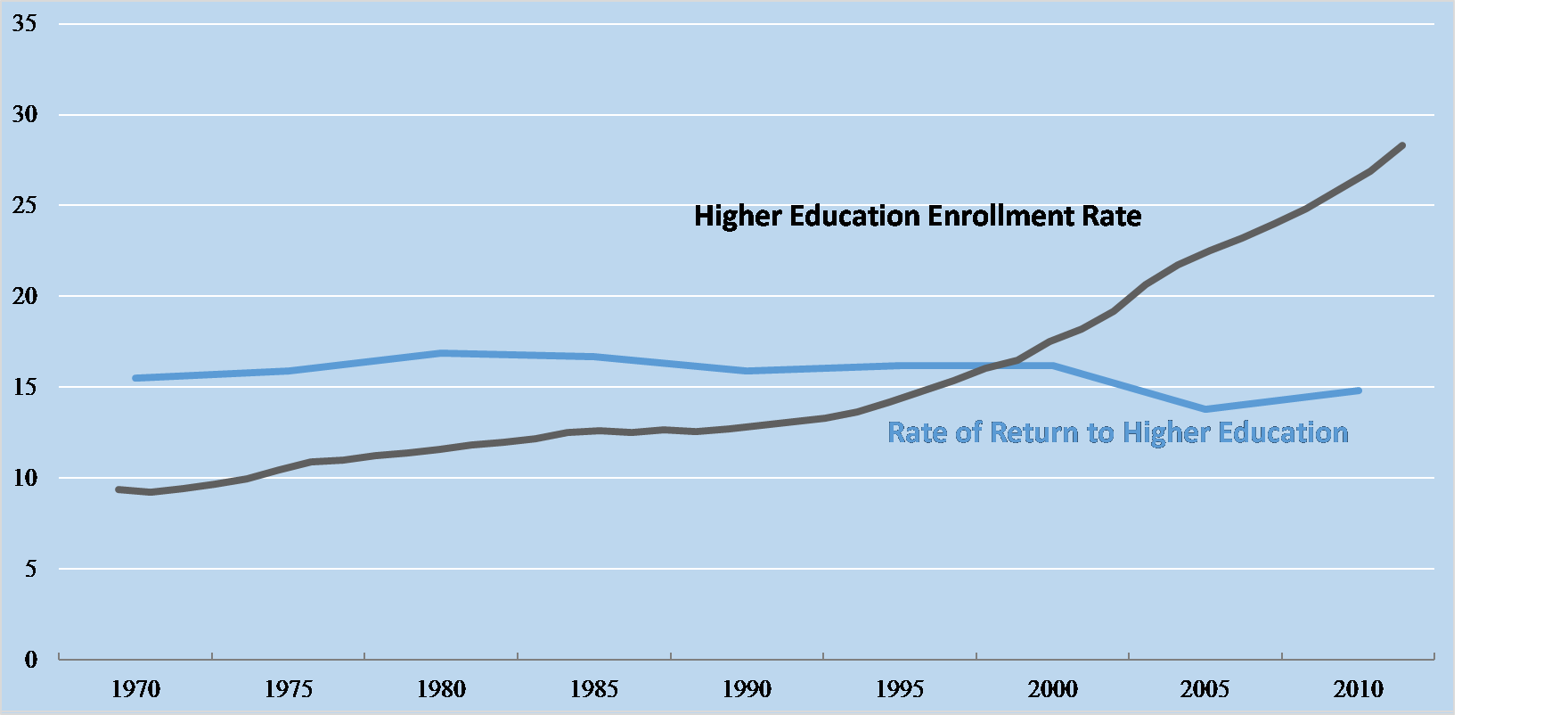When video streaming services like Netflix, Hulu, and Amazon Prime offer a one month free subscription, they are offering potential users an opportunity to experience the benefits of having access to a wide range of entertainment options, weigh the benefits against the monthly subscription cost, and hopefully, promote adoption in the long run. Essentially, Netflix is providing us a short-run subsidy to promote long-run adoption. So, what can we learn from Netflix’s marketing strategy about promoting technology adoption in the field of development economics? We know that some technologies are experience goods and a one-time subsidy may promote experiential learning, leading to higher adoption in the long run. However, policymakers and practitioners often worry that providing large initial subsidies may set a wrong precedence, distort the expected price of a new technology and make people less likely to adopt and continue to use a technology once the subsidy is discontinued. What they are referring to is called reference dependence in prospect theory.
Given the competing effects of experiential learning and reference dependence, my job market paper asks whether short-run subsidies help in promoting technology adoption, and who benefits the most from them. In a randomized experiment using Becker-DeGroot-Marschak (BDM) auctions, we provide farmers the opportunity to buy subsidized improved grain storage bags in India. Our study area covers 1429 households in 42 villages of the eastern state of Bihar in India. We find that using this technology for one year (or two agricultural seasons) has substantial food security benefits. We then conduct a second round of auctions and compare the changes in willingness to pay for technology among first and second-time (or experienced) buyers. We find a significantly higher willingness to pay for improved storage technology in the second round of auctions, along with strong evidence for experiential learning, but none for reference dependence. We further look at allocative efficiency and find that, interestingly, the largest beneficiaries of improved storage are the farmers with the lowest initial willingness to pay.
This paper builds on the work by Dupas (2014) and Carter et al. (2014) to look at the impact of one-time subsidy on later adoption of technology. Broadly, it makes the following three contributions:
Contribution 1: Quantifying the demand for and benefits of improved grain storage technology
Farmers in developing countries face potentially large economic and health costs due to the lack of access to proper storage methods for staple cereals. Smallholder farmers’ food security depends on reducing postharvest losses, getting better market prices for their grains, reducing toxic contamination of stored grains and being able to smooth consumption inter-temporally. Using BDM auction as a method for randomizing treatment assignment at the individual level allows us to directly elicit farmers’ willingness to pay for this new technology, and measure its impact. Among other outcome variables, we also test grain samples for aflatoxin - a toxic carcinogenic contaminant that poses a wide range of health risks including reduced immunity, low birthweight and stunting, among others. As shown in Figure 1, we find that using improved storage technology has significant health and food security benefits.
Figure 1: Impact of using improved storage technology on food security outcomes
Recent research suggests that farmers in developing countries seldom take advantage of inter-temporal arbitrage opportunities in the market due to credit constraints (Burke, 2014). While credit constraints may certainly be one of the reasons for farmers’ under-utilizing arbitrage opportunities, our results suggest that lack of access to proper storage technology is also a part of the problem. We find that when given access to improved storage methods, farmers store for longer, and sell significantly more in the market than their peers in the control group.
Contribution 2: Examining the allocative efficiency of the subsidy
Using the auction design allows us to measure the impact of the treatment across the willingness to pay spectrum, and understand the allocative efficiency of the subsidies. We find that groups with low and medium initial willingness to pay derive the most benefit from using the improved storage technology. This is an interesting result because we tend to assume that unlike policymakers, individuals are aware of their private benefits and costs, and in the absence of credit or liquidity constraints, farmers who expect to receive the most benefits should have the highest willingness to pay for the technology. These results allow us to provide valuable inputs in terms of magnitude and targeting of subsidies needed to promote adoption to different groups of potential users. A policy that provides a low level of subsidy for technology may result in adoption only by individuals with high willingness to pay, who may not benefit as much from adoption. In such a case, a low level of subsidy might prove to be more expensive than a high level of subsidy, given the different user groups they target.
Contribution 3: Experiential learning versus reference dependence in technology adoption
This is an important question for policymakers who often have to decide between providing subsidies to promote technology adoption and allocating scarce resources to different welfare programs. As shown in Figure 2, our results suggest that experiential learning from a one-time use of the improved storage technology leads to around 26 percent increase in willingness to pay in subsequent purchase decisions.
Figure 2: Aggregate demand curve for improved storage technology (auction rounds 1 and 2)
Since the actual price paid for the technology is decided by a random draw (and is different from the willingness to pay estimate) in our design, it allows us to decouple the effect of experiential learning from reference dependence. We find no evidence of reference dependence supporting the idea that short-run subsidies can promote long-run adoption of any new technology that may be an experience good.
Our research suggests that experience drives adoption. After all, how many of us know people who discontinued using Netflix after their free one month subscription expired?


Join the Conversation